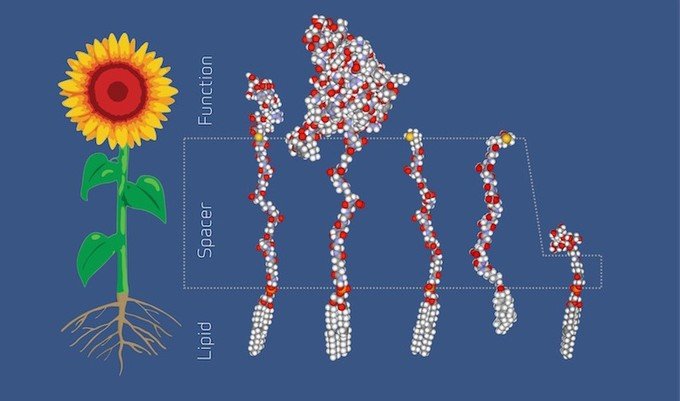Kode Biotech, winner of the Supreme New Zealand Innovator award

“Most people don’t understand innovation,” says Steve Henry, CEO and chief science officer of Kode Biotech, and professor of biotech innovation at AUT. “Most people think innovation is invention, they don’t understand that innovation is the conversion of invention into something useful. Something that people are going to buy, or use. Implementation of the invention is innovation.”
Kode is Henry’s invention, one that he, his team, and his commercial partners, are constantly innovating. Kode is a synthetic molecule that can attach to the surface of any biological matter, and almost any non-biological matter, at a nanolevel. One of the most exciting uses of the molecule at the moment is to label or modify the outside of cancerous tumours, prompting body’s immune system to attack them. But there are plenty of others.
“We can take any biological surface and add in new features, or more features, that are biological, or features that never have existed on a biological surface before,” Henry says.
“We can not only modify the surface of any cell, bacteria or virus; we can modify plastics, metals, glass. One second of contact of our molecule with any surface, and our molecules spontaneously self-assemble into the surface.”

Image: Kode CEO Steve Henry (right) award in hand, with Tobias Marchand, managing director of Bayer Australia & New Zealand
Asked what Kode’s applications are, Henry can barely contain his excitement.
“We took European blood and painted on Asian blood group markers. So it can be used in Asia for diagnostics. Impossible in nature!”
“We can label individual cells with a unique barcode. We can make molecules glow in the dark. In surgery, we can treat everything; we can treat the implant, the surgical devices, the surgeon, the gloves, the scissors, the sutures, the pick-lines. With a simple spray or drip of my solution, that surface becomes self-sterilising for the next twenty-four hours. Nothing exists like that.
“The number of uses of this technology is insane,” he says, still amazed by his invention. “The problem is, people don’t get it. They don’t understand. It’s too good to be true!”
What may be the most important use of Kode to date is a new cancer treatment, developed with UK pharmaceutical company Agalimmune.
The treatment involves a molecule that flags tumorous cells with a harmless synthetic animal antigen, which the patient can easily get rid of. While disposing of the antigen, the patient’s immune system notices the tumorous cells and begins fighting the tumour.
The patient “turns on the antibodies, it finds all the primaries, all the secondaries and all the microbes, killing them all,” Henry says.
Not only does the treatment notify the immune system about tumours, it also teaches it to look out for the same tumours in the future.
“Now [the patient] remembers what they look like so they don’t get that tumour again, because they’re now constantly surveilling their own body,” he says. “We didn’t kill the tumour, we just told the body where to look.”
Next year, Agalimmune will go into human testing, which could mean hundreds of millions of dollars in licensing fees. And it won’t just end there, Henry says.
Find out more about the NZ Innovators Awards here




